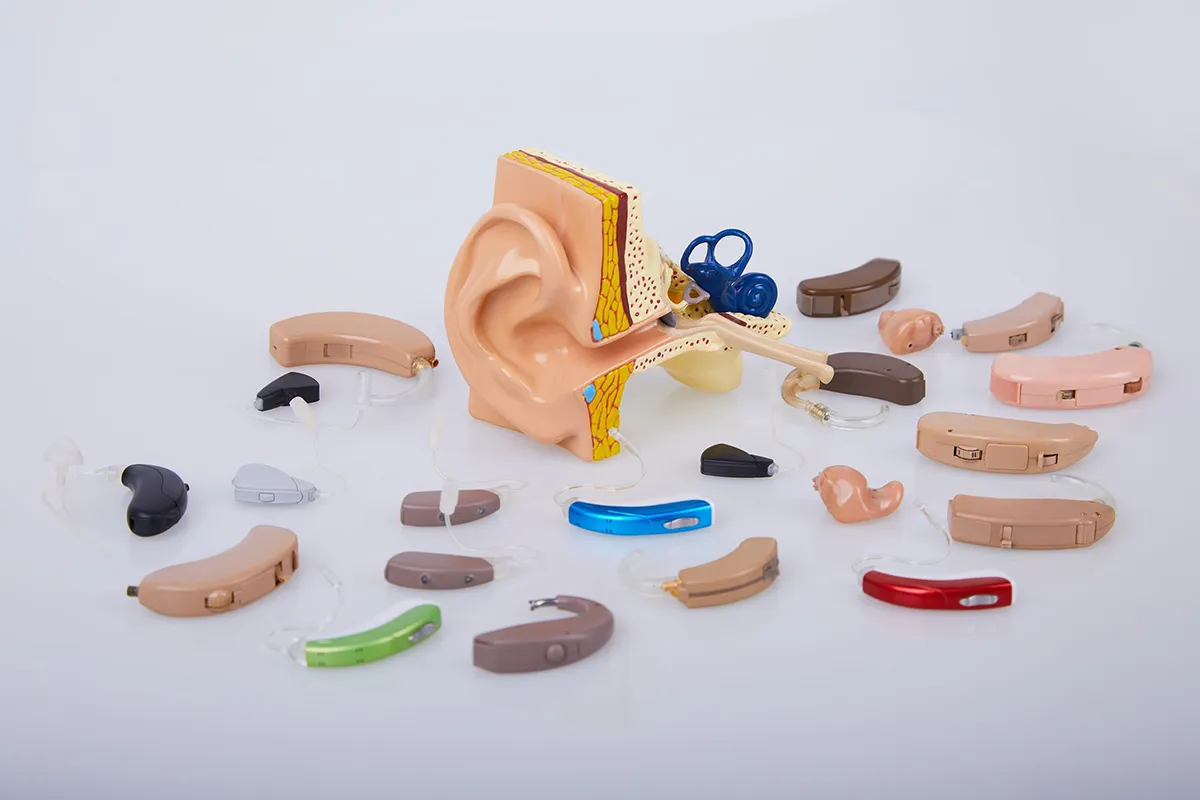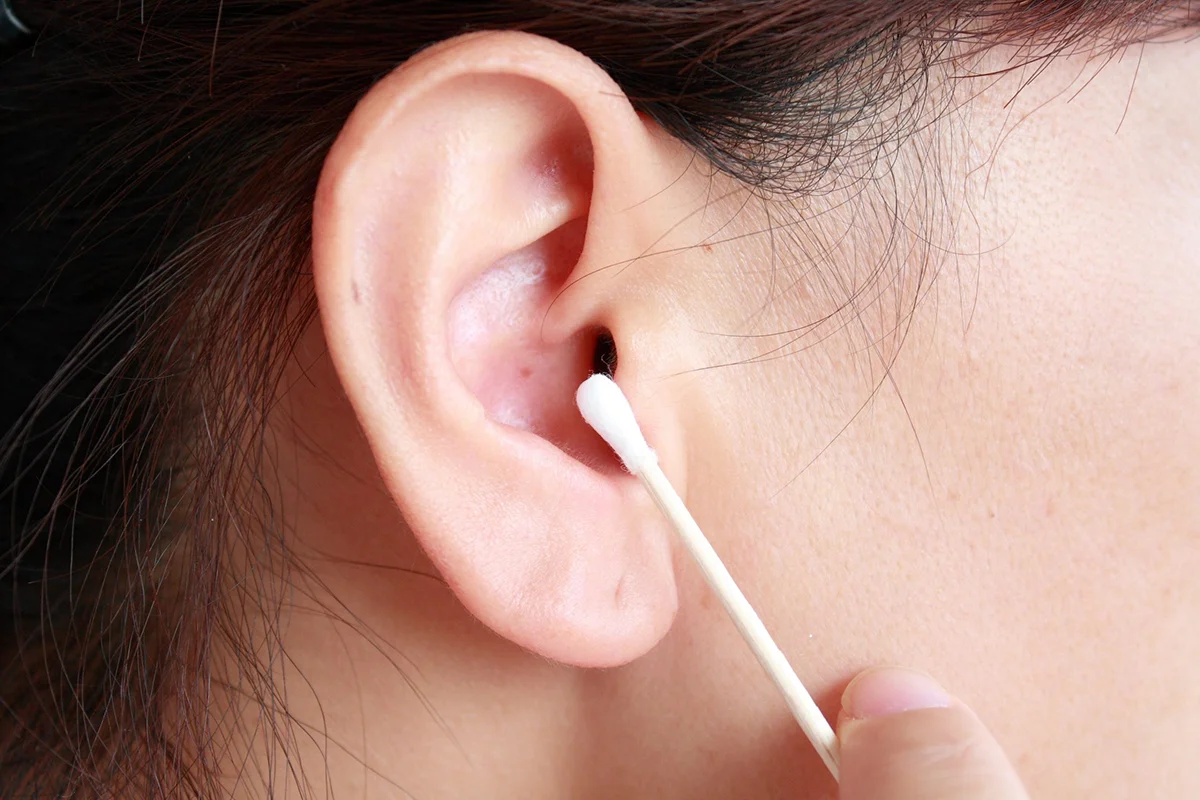Have you had your hearing tested by a licensed hearing professional and wondered why they made the specific style recommendation? Have you seen other people’s hearing aids and wondered why they chose a visible style? There are various factors to consider when selecting a hearing aid. I’m going to let you in on all our secrets…okay, it’s not a secret, but it’s a lot of info we went to school or trained for many years to specialize in. First, I’m going to share the top 10 considerations and a little of the logic behind them. In the second half, we will go over the various styles of hearing aids with these considerations in mind (grab a cup of coffee or tea, kick up your feet for a bit—it’s about a 15-20 minute read).
- Degree of hearing loss: This means how little or how much amplification is needed for your hearing loss. The more hearing loss you have and in specific frequencies determines how large the speaker may need to be. The size of the speaker and amount of volume you need to come out of it dictates how much power it needs from the battery. Therefore, they affect how large a disposable battery may need to be or how long a rechargeable battery charge will last each day. Battery and speaker size can affect the size of the device. More amplification may also dictate either how far apart the speaker and the microphone need to be or how sealed off from each other they are to prevent feedback whistling.
- Shape of your hearing loss: If you hear low frequencies (bass tones) in the normal or mild low frequency range, you want your ear canal to be relatively open. If you completely block the ear canal with a device, it will create hearing loss by blocking sounds and create the “occlusion effect” (an echo or barrel effect of your own voice). On the other hand, if you do have low frequency hearing loss, the fit needs to be a closed fit to seal up and hold in the amplified low frequency sounds so they can get down to your eardrum.
- Size, shape, and movement of your ear and the ear canal: Everyone wants a small device, but the ear has to have the room to accommodate holding all the components in it. If you try an over-the-ear device and wear glasses, the top of the ear needs to be able to accommodate both. Ear canals are also not static. Ear canals move and oscillate with jaw movement (talking, chewing, coughing) and head turns. Custom, in-the-ear devices are made from a mold of your ear canal, so the device may fit perfectly as long as you’re not moving, talking, or eating, but may migrate out as soon as you do. It may take several remakes or modifications to achieve an acceptable fit.
- Typical health of your ear canal: If you are prone to outer ear canal infections, your canal needs to be open and able to aerate. If you are prone to middle ear infections and have a perforation (a hole) or P.E. tube placed in your eardrum to keep the middle ear aerated and able to drain, this may impact the ability to have the electronics in the ear at all—you may require all the electronics to be on top of the ear with a hollow tube that amplification travels through, to a custom-made ear mold.
- Amount of wax and how quickly it accumulates: Healthy ears should have some wax in them (you can learn more about maintaining the health of the outer ear canal in our blog post here). No matter how well you clean your devices every day, they still sit in a moist, waxy, and oily environment that overtime will eventually compromise the components. If you have a lot of wax production that continues to impact in-the-ear devices, it may be necessary to consider a style with all, or most, of the components built out of the canal or on top of the ear.
- Your dexterity: How well you can use your fingers and if you have neuropathy in them. If you require a program button or switch on the device, can you feel it to use it? You need to be able to manipulate a small device to clean or change out the small parts, change batteries or be able to place it into a charger properly, as well as place it in and properly remove it from the ear.
- Your vision: All hearing aids require daily cleaning. The better you can see the tiny bits of debris in the tiny components—the smaller a device you’ll be able to take care of. If you have vision issues, sometimes a bigger device is necessary to manipulate and see the parts that need to be cleaned or changed, like a larger disposable battery versus small ones or rechargeable options that are easy to place inside the charger.
- Interest in Bluetooth: If you want to be able to take phone calls and listen to music through your hearing aids, this audio streaming requires a wireless Bluetooth receiver in the hearing device. Bluetooth uses a LOT of battery power quickly, so it requires a lot of battery to keep it powered (and reduces the battery life). Also, if you want good sound quality when streaming, the fit needs to be a closed fit to hold the bass tones in. The most common kind of hearing loss typically hears bass tones well, which requires open fit devices.
- Interest in compatible apps and level of tech savviness: This requires that you know how to use your own phone model, change settings, Bluetooth, etc. Some people don’t like having something extra to “fuss” with and prefer to put it in and go, while others like to have control and flexibility with their settings. If you like the ability to make changes to the volume of your hearing aids, adjust the treble and bass, how much they are filtering out noise to preserve speech, etc…numerous manufacturers have apps associated with their hearing aids to accomplish these. There are a few ways around having to use Bluetooth to, instead, keep the devices small and preserve the battery life, but any trade off may come with its own limitations.
- Your budget: A lot of people think the smaller, or more custom-made the hearing aid, the more expensive it will cost—this is not true. Most manufacturers offer different technology levels and features that dictate their costs. Depending on your hearing loss, how degraded your ability is to understand speech, and how challenging your listening environments are will all dictate the level of technology recommended for you (everyone will do the best with the highest level, but it doesn’t fit everyone’s price point). The other factor is the distribution model you purchase through. Certain patients need to be managed in an office…in-person with your local licensed hearing professional. If you want a custom, in-the-ear device or earmolds, have tricky ears or advanced hearing loss, if your ears and devices need frequent professional cleaning, or if you’re not tech savvy and require in-person help—you may need to purchase through a clinical or office setting. When you purchase from a local professional, their services of providing hands-on help and giving your devices a deep clean on a regular basis are typically bundled into that price.
Licensed professionals make an educated recommendation to accomplish the goal: Something you’re able to wear comfortably all day to hear conversations better, to reduce mental fatigue, and to enhance your quality of life. Now that you understand the various hearing and lifestyle considerations, you can better understand the pros and cons of each model to select what will help you achieve that goal.
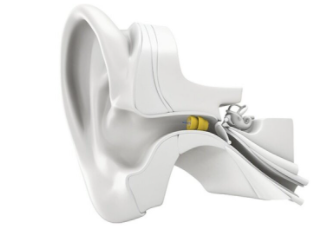
Lyric Pros: It is extended wear, meaning it stays in the ear all the time until it needs to be changed out—you leave them in while sleeping and showering. They come with a special magnetic wand (called SoundLync) you place in your ear to access different programs or to mute it (like when sleeping).
Lyric Cons: The battery and microphone last about 1-3 months and you can remove it yourself, but you won’t hear well until you are able to get an appointment with your provider to place a new one. Not all providers fit Lyric because they need special training to place it a few millimeters from the eardrum. You can’t swim with your head underwater without investing in custom-made swim plugs. Also, there’s no Bluetooth audio streaming. And they’re not good for waxy ears or ears prone to infection. It’s the least cost-effective option at $1700-3400 billed annually for a subscription.
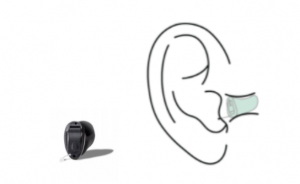
Invisible in the Canal (IIC) Pros: Invisible or virtually invisible. Less occlusion effect because it fits deeper into the canal if the canal is large enough to accommodate this. Typically has a compatible app with an alternative ability to change programs that is not via Bluetooth.
Invisible in the Canal (IIC) Cons: Hard to fit small or tricky shaped canals. Can be more prone to feedback whistling if a good fit cannot be achieved. Very small batteries to change often—no rechargeable options. No room for program buttons or switches. Not usually able to accommodate the power needed for very severe to profound losses. No Bluetooth audio streaming. Requires diligent daily cleaning. Healthy canals with minimal to no ear wax are best. Requires good vision and dexterity to insert properly and clean.
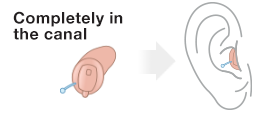
Completely in the Canal (CIC) Pros: Barely visible. Fits most degrees and shapes of hearing loss. Might have room for a program button if desired.
Completely in the Canal (CIC) Cons: Unless you have a large canal with room for open venting in the device, it’s a closed fit and you’re likely to experience the occlusion effect. Hard to fit small or tricky shaped canals. Can be more prone to feedback whistling if a good fit cannot be achieved. Very small batteries to change often, and limited rechargeable options. No Bluetooth audio streaming. Requires diligent daily cleaning. Healthy canals with minimal to no ear wax are best. Requires good vision and dexterity to insert properly and clean.

In the Canal (ITC) and In the Ear (ITE) Pros: Better for clients with vision and dexterity issues. Has the space to put a button or volume wheel on the device for access to more than one program without having to use an app if not desired. More room on the device to vent it to make it more open in order to reduce the occlusion effect. A larger battery that’s easier to change and lasts longer, or more rechargeable options at this size. Bluetooth audio streaming is available if desired. Still requires daily cleaning, but the microphone is less exposed to canal debris and easier to keep functional.
In the Canal (ITC) and In the Ear (ITE) Cons: Very visible. Other considerations: the microphone is more exposed to the wind as well as picking up more noise around the head.
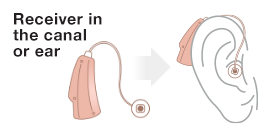
Receiver in the Canal/Ear (RIC/RITE) Pros: Somewhat visible. Most commonly recommended and fit for a number of reasons. First, this style is open fit. Open fit is most appropriate when people can hear the low frequencies well and need the high frequencies amplified (the most common kind of hearing loss), so you’re less likely to experience the occlusion effect. Most of the electronics are on top of the ear and the small speaker plugs into it and sits in the canal entrance, so it’s best at accommodating small and tricky ear canals. If the speaker is compromised from the ear canal environment, your local office typically has more in stock, they unplug it and plug in a new one and you’re good to go. The microphone is on top of the ear away from the speaker, so it’s less likely to feedback whistle. Various styles of tips can be placed on it to achieve a secure and comfortable fit, or a custom speaker can be made to fit almost all degrees and shapes of hearing loss, if necessary. Typically comes with a button or rocker switch on the device to access programs and/or volume without having to use an app, if not desired. Bluetooth audio streaming and rechargeable options are available if desired. Most online purchasing options, or options with remote professional help, offer this style.
Receiver in the Canal/Ear (RIC/RITE) Cons: This style is frequently rejected due to visibility and stigma. When the microphone is on top of the ear it is more exposed to wind and noises around the head, so it needs more features as well as better noise options and logic built into the technology to account for this. If you wear glasses, sunglasses, or masks, the top of the ears have to have space to accommodate everything and you have to be careful not to knock the device off of your ear.
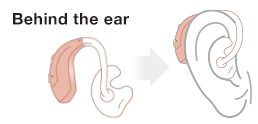
Behind the Ear (BTE) Pros: All the electronics are on top of the ear, not exposed to debris in the canal. Various custom earmold configurations can be made to allow the ear to aerate if prone to infection. It’s the best style for extremely waxy ear canals or canals that have chronic active drainage. The tube and mold can be taken off of the ear and washed with mild soap and water. This style is most frequently fit for profound hearing loss. It’s also often fit on babies and kids as their ears continue to change and grow, and new earmolds can continue to be made inexpensively compared to other device styles. They can accommodate larger batteries, so Bluetooth audio streaming and rechargeable options are available if desired.
Behind the Ear (BTE) Cons: Both device, tubing, and earmolds are visible. The tubing shrinks, hardens, and discolors and needs to be replaced in the office, usually at least every 6-12 months. New earmolds do need to be remade as the ear changes, usually annually. Typically these patients need their ear health and hearing continually checked and maintained in an office setting—remote audiology options are not the best.
According to a very in-depth article by Hearing Tracker titled, “Hearing Aid Price Tracker. How much do hearing aids cost in 2021?” they performed a survey of over 2K patients who purchased hearing aids and found that high-level technology hearing aids dispensed through clinical or office settings averaged $5,302 for a pair. Less if you purchase through a big box store— but styles, levels of technology, and service availability may vary. If they use disposable batteries, depending on how long each lasts, batteries will run anywhere from about $30-150 a year.
So where am I going with all this besides bursting your bubble? Eargo decided to think outside the box instead of offering more of the same. Eargo accounts for some of the shortcomings of traditional hearing aids to offer something you might actually be excited to try out. To do an apples-to-apples comparison, let’s start with the same pro/cons list as the others.
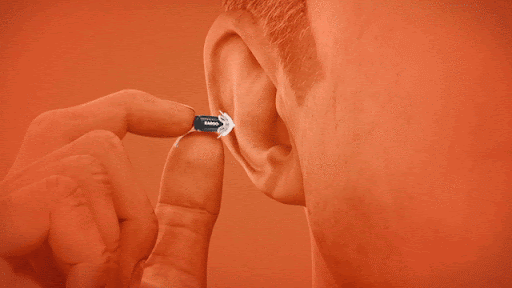
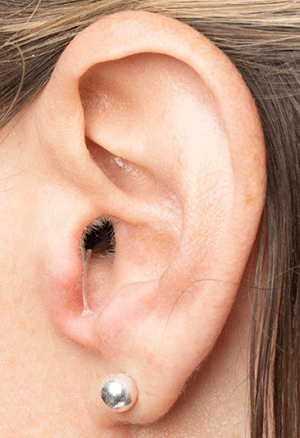
Eargo device inserted into ear canal
Eargo Pros: Virtually Invisible. No custom ear impressions and remakes are necessary—it’s manufactured to be as small as possible. Sports an open fit to avoid the occlusion effect. Uses a unique double-tap on the device to change the programs or compatible app offers an alternative to change programs that is not via Bluetooth. Fully rechargeable. A full staff of licensed hearing professionals to assist remotely. More cost-effective than the traditional hearing aid distribution model: an Eargo system (two hearing devices and charger) ranges from $1500-2990.
Eargo Cons: May not fit all ears that are very small and tricky. Not enough speaker and battery power to accommodate severe to profound losses. No Bluetooth audio streaming. Healthy canals with minimal to no ear wax are best, or otherwise, require diligent cleaning. Requires good vision and dexterity to clean and remove/insert properly in the ear and the charger. No local offices to help in person.
Eargo is the only virtually invisible, in-the-ear, open fit, fully rechargeable hearing aid device on the market. You may see other products that resemble Eargo, but they are typically amplifiers. At Eargo, we put our top-level hearing aid technology into each device model release. We don’t strip it of features you need just to offer our lower price points. They’re offered in the smallest form factor we can produce to create an invisible, yet open fit, option to accommodate this most common, high-frequency, mild to moderate hearing loss. To keep them small, we (just like every other small, in-the-ear device) have to forgo Bluetooth in the device. Patented, interchangeable, silicone tips (called “Petals” on Eargo 5) molds/bends and curves to various canal shapes and sizes to provide comfortable retention. Open fit is achieved with open Petals to avoid the occlusion effect—closed Petals are best if your hearing loss needs more bass sounds held in.
You can change programs with a double-tap of your hand on the back of the device, or for Eargo 5, you can use the mobile app which utilizes ultra high-frequency technology to send a command from compatible phones to the hearing device in order to change the program, treble, bass, volume, etc. Not only are the hearing device batteries rechargeable, so is the portable charger that comes with every pair of Eargo devices. Eargo has a large staff of licensed hearing professionals and client care support who help you remotely (via phone calls, video calls, emails, text, etc.) and you have access to self-help information, including how-to videos, full-length user guides, a help library, and even a chatbot that can walk you through advanced troubleshooting, step-by-step, any time of day that’s convenient for you.
Eargo is not for every ear and every hearing loss, but it’s what I like to call a “one size fits most.” Eargo fits most ears, is appropriate for most mild to moderate hearing losses, and most people are able to manage the charging and cleaning well. Eargo is a great place to start. If it meets all your needs…perfect! If not, now you know what other models are available and best for various needs. When it doesn’t turn out to be a good fit, a lot of our customers are really sad to return their Eargos (for a full refund, by the way), but they know they have our support to find something that’s best for them. I firmly believe people don’t need “to be sold”…they need to be informed. If you can trust and understand a product and see the value in it, people want to try it out. Too good to be true? Still not sure? That’s ok, we have a special team of Personal Hearing Guides who can answer your questions…if you want to call in and bend their ear (You know I couldn’t end this without an ear pun somewhere!).
